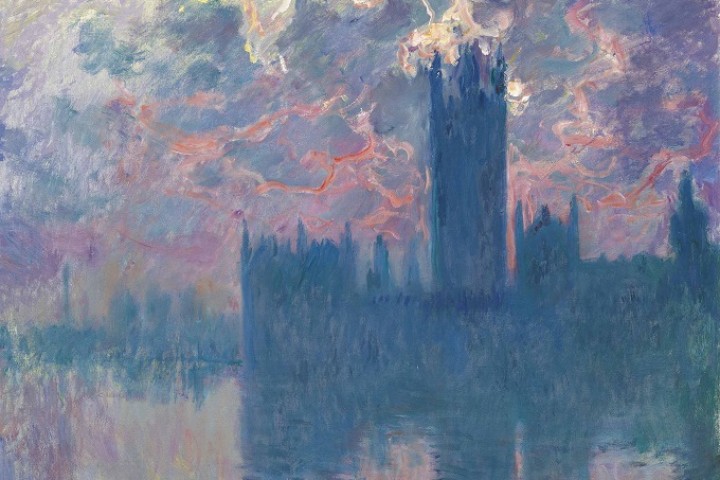Air pollution increase visible through the paintings of 19th-century artists

Some 19th-century works by artists such as Turner and Monet hold a record of air pollution from the Industrial Revolution, according to a study.
Paintings have been known to mirror the atmospheric conditions in which artists painted. Anna Lea Albright and Peter Huybers developed a statistical model to determine whether the paintings of British artist J. M. W. Turner and French artist Claude Monet, whose works span the Industrial Revolution, reflect the heightened air pollution that clouded the skies over 19th-century London and Paris.
The authors created a measure of contrast and tested it on photographs taken in clear and polluted conditions. Next, they measured contrast in 60 paintings by Turner and 38 paintings by Monet, including multiple views of the Houses of Parliament, Waterloo Bridge, and Charing Cross Bridge, and examined links with an indicator of historical air pollution based on sulfur dioxide (SO2) emissions.
Increasing SO2 emissions were linked with reduced contrast in the paintings, even after accounting for time trends and subject matter.

Schematic illustrating key processes by which aerosols influence an object's contrast, intensity, and visibility. A theoretical object (denoted by the gray disk) reflecting light (black arrows) is visible because of its contrast with the background light (pale blue arrow). Aerosols (navy dots) in the air column scatter background light into the line of vision ("in-scattering," highlighted in light yellow), scatter object light out of the line of vision ("out-scattering"), and absorb light. These optical effects from aerosols lead a viewer to perceive an object as having less-distinct edges (less contrast) and a whiter tint (increased intensity), as idealized by the images on the left- and right-hand side (Claude Monet's Houses of Parliament, Effect of Fog, 1899–1904) and described in Methods. Credit: Proceedings of the National Academy of Sciences (2023). DOI: 10.1073/pnas.2219118120
With increasing air pollution, Turner's work transformed from sharp to hazy contours, saturated to pastel-like colors, and a figurative to impressionistic style. Similar changes were seen in Monet's paintings. Additionally, the model predicted contrast in paintings by Gustave Caillebotte, Camille Pissarro, and Berthe Morisot based on pollution levels in Paris.
Because aerosols reflect light of all wavelengths into the line of sight, the authors also examined links between pollution levels and light intensity. The paintings revealed a link between increased SO2 emissions and a whiter palette and increased intensity. According to the authors, the works of Turner and Monet carry quantifiable clues to air pollution levels during the Industrial Revolution.
The research is published in the journal Proceedings of the National Academy of Sciences.

.JPG)